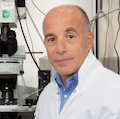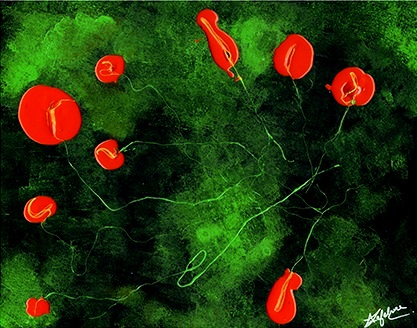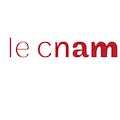About the course / À propos du cours
Brain function determines our behavior and dictates who we are. Our brain function governs our every thoughts and every action. The brain processes information through the concerted activity of many neurons, which communicate with each other through contacts we call synapses organized in highly dynamic networks. In this course, we are taking a bottom up approach to studying the brain, starting from molecules to end with behaviors and mental disorders.
La fonction cérébrale détermine notre comportement et nous façonne. Elle contrôle chacune de nos pensées et actions. Le cerveau traite l’information à travers l’activité concertée de nombreux neurones, qui communiquent les uns avec les autres grâce à des contacts appelés synapses, organisés en réseaux extrêmement dynamiques. Dans ce cours, nous étudierons le cerveau, en commençant par les molécules et nous terminerons sur les comportements et troubles mentaux.
Understanding how the brain works is one of the greatest remaining mysteries that challenge mankind. This challenge is so huge that some people even think that it will never be possible to really understand how the brain functions. But modern neuroscience is making remarkable progress, so intense that we can feel to be part of a scientific revolution to a similar extent than the Copernican Revolution or Darwinian Revolution.
Comprendre le cerveau reste l’un des grands défis de l’Homme. Un défi si grand que certaines personnes le pensent impossible. Cependant, la neuroscience moderne continue de faire des progrès remarquables, tels qu’on pourrait se trouver au cœur d’une révolution scientifique similaire aux révolutions copernicienne ou darwinienne.
Brain and behavior are inextricably linked in neuroscience. The function of the brain is to govern behavior, and the aim of this course is to causally link brain development to brain functions and their related behaviors. The brain processes information through the concerted activity of many neurons, which communicate with each other through synapses organized in highly dynamic networks.
Pour la neuroscience, le cerveau et le comportement sont inévitablement liés. Le rôle du cerveau est de contrôler le comportement, et l’objectif de ce cours est de montrer le lien de causalité entre le développement du cerveau, la fonction cérébrale et les comportements qui en résultent.
The course is devoted to describe how the brain develops and then functions to perceive the external world and learn from our experiences. Thus, this course aims for a causal and mechanistic explanation of brain functions that depend on two key players: the external world of course but also our internal states, of which the microbiota is an important component.
Ce cours s’attachera à décrire comment le cerveau se développe puis agit pour percevoir le monde extérieur et apprendre de nos expériences. Ce cours vise alors à apporter une explication sur les causes et la mécanique des fonctions cérébrales qui dépendent de deux éléments clé : le monde extérieur bien sûr, mais aussi nos états internes, dont le microbiote est un composant important.
Goals / Objectifs
The first goal of the course is to gain a detailed understanding of the structure and function of the fundamental building blocks of the mammalian brain.
Le premier objectif de ce cours est de comprendre en détails la structure et la fonction des blocs de construction du cerveau mammalien.
The second goal is to understand how a given neural stem cell could give raise to fully organized brain circuits.
Le deuxième objectif est de comprendre comment une cellule souche neurale peut donner naissance à des circuits entièrement organisés.
The third goal is to bring you to the fascinating world into which groups of neurons work together as interconnected neural cells.
Le troisième objectif est de vous faire voyager dans un monde fascinant où les neurones fonctionnent ensemble comme cellules neurales interconnectées.
The fourth goal is to approach neuronal disorders as consequences of brain circuit dysfunctions. We are going to consider what happens when the brain goes wrong with dramatic consequences for the individual and society as a whole.
Le quatrième objectif sera d’aborder les troubles neuronales comme les conséquences de dysfonctionnements du circuit cérébral. Nous verrons ce qu’il arrive lorsque le cerveau ne fonctionne plus correctement et les graves conséquences sur l’individu et la société entière.
The fifth goal places the brain inside a body interacting both with the external world and the internal state.
Le cinquième objectif est de mettre en contexte le cerveau dans un corps qui interagit à la fois avec le monde extérieur et l’état interne.
Format
Each week of the course consists of four video-lectures, each lasting from 10 to 15 minutes. / Chaque semaine consiste en une série de 4 vidéos de cours. Chaque vidéo dure 10 à 15 min.
Requirements / Prérequis
All are welcome to sign up now through the end of the course, either you are an undergraduate student, a PhD/MD student, a teacher, a researcher, or just curious to understand how the brain works.
Vous êtes tous invités à vous inscrire à ce cours, que vous soyez étudiant en licence, en master, en doctorat, un enseignant, un chercheur ou tout simplement curieux de comprendre comment fonctionne notre cerveau !
The MOOC’s instructor / Le responsable du cours
Prof. Pierre-Marie Lledo
- Chairman of the Department of Neuroscience at the Pasteur Institute
- Head of the Laboratory "Perception and Memory" at the Pasteur Institute
- Director of the Laboratory "Genes, Synapses and Cognition" at the French Center for Scientific Research (CNRS)
- Director of the Teaching Graduate Program "Development and plasticity of the nervous system" at the Pasteur Institute
Speakers / Intervenants
Johnathan ASHMORE, Laure BALLY-CUIF, Yehezkel BEN-ARI, Thomas BOURGERON, Hervé BOURHY, Léna CLEMENT, Pierre Jean CORRINGER, Gérard EBERL, Stuart FIRESTEIN, Fiona FRANCIS, Patricia GASPAR, Christian GIAUME, Jean-Antoine GIRAULT, Charles GREER, Pierre-Marie LLEDO, Gabriel LEPOUZEZ, Salvador MARTINEZ, Uwe MASKOS, François SCHWEISGUTH, Alain TREMBLEAU, Philippe VERNIER.
We would like to thank Alicia LEFEBVRE for her painting "Nature vivante." that illustrates this page. / Nous remercions Alicia LEFEBVRE pour l'oeuvre picturale "Nature vivante." qui illustre cette page.
Summary / Plan du cours
Week 1: How the building blocks are assembled in the developing brain / Semaine 1 : Comment les blocs de construction sont assemblées dans le cerveau
- Brain under construction: Molecular managers and cellular boulders / Le cerveau en chantier : des gestionnaires moléculaires et des briques cellulaires
- General principles of the development and evolution of the central nervous system in Chordates / Les grands principes du développement et de l’évolution du système central nerveux des chordé
- Olfactory circuit development / Le développement du circuit olfactif
- Functional architecture of nicotinic receptors and their homologs / L’architecture fonctionnelle des récepteurs nicotiniques et de leurs homologues
Week 2: How stem cells can give rise to brain circuits / Semaine 2 : Comment les cellules souches donnent naissance aux circuits cérébraux
- Early steps in the making of the fly brain / Les premiers stades du développement du cerveau d’une mouche
- Compared embryonic and adult neurogenesis modes in zebrafish / Comparaison de l’état embryonnaire et de la neurogenèse adulte chez le poisson zèbre
- Local translation of neuronal mRNAs: From molecules to circuits and behavior / Traduction localisée des ARNm (acide ribonucléique messager) neuronales : des molécules aux circuits et comportements
- Shaping the brain / Façonner le cerveau
Week 3: Brain circuits functions and how they are related to behavior / Semaine 3 : Fonctions des circuits cérébraux et leur relation au comportement
- Sensory system / Le système sensoriel
- Hearing: how the cochlea does a hard job with soft parts / L’ouïe : comment la cochlée travaille dur avec des éléments mous
- How biology Percieves Chemistry: The chemical senses / Comment la biologie perçoit la chimie : le goût et l’odorat
- The cerebellum: what are the majority of brain cell good for? / Le cervelet : à quoi sert la majorité des neurones de notre cerveau ?
- Neuroglial interactions in brain physiology / Physiologie du cerveau : interactions entre les cellules gliales
- Activity-dependent mechanisms of sensory map refinement / Les mécanismes dépendants de l’activité pendant le raffinement de la cartographie sensorielle
Week 4: Understanding mental disorders through brain circuits dysfunctions / Semaine 4 : Comprendre les troubles mentaux à travers les disfonctionnements des circuits cérébraux
- The developing cortex and associated malformations / Le cortex en développement et les malformations associées
- A genetic dissection of nicotine addiction / Dissection génétique de l’addiction à la nicotine
- Neurons of addiction / Les neurones de l’addiction
- Genes, synapses and autisms / Gènes, synapses et autismes
- Is delivery a critical period in the pathogenesis of autism? / Est-ce que l’accouchement est une étape critique dans l’apparition de l’autisme ?
Week 5: Interaction between microbiota and the brain / Semaine 5 : L’interaction entre le microbiote et le cerveau
- Input of neuroscience on the understanding of rabies / La participation de la neuroscience à la compréhension de la rage
- The symbiotic microbiota / Le microbiote symbiotique
- How does the gut microbiota influence the brain? / Comment le microbiote de l’intestin influence le cerveau ?



